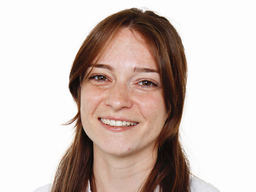PhD Defense: Emily Faber
Location
Physics : 401
PhD Defense: Emily Faber – Online Event
Date & Time
November 10, 2025, 12:00 pm – 2:00 pm
Description
ADVISOR: Dr. Adriana Rocha Lima
TITLE: Advancing Dust Emission Modeling: Physical Parameterization Improvements and Impacts
ABSTRACT: Mineral dust is one of the most important aerosols when studying the radiative balance and climate of the planet. There are different physically based dust emission schemes utilized by the climate and atmospheric modeling communities. Many of these schemes disagree on basic output quantities such as mass of dust emitted and distribution of mass among size bins. In this work, we examined mineral dust emission from a leading model scheme, the Goddard Chemistry Aerosol Radiation and Transport (GOCART), as utilized in the Modern-Era Retrospective analysis for Research and Applications, Version 2 (MERRA-2) Reanalysis and compared it to dust emissions calculated using wind measurements from ground based weather stations. Differences of the observed and modeled wind field are quantified, and impacts of differences on dust emissions are calculated. These differences in wind speed propagated to a difference in dust mass emitted by the use of a static source function which aids in scaling the mass emitted by the availability of dust in each grid. Additionally, the magnitude of these differences varies seasonally. Using the Unified Forecast System (UFS), we examine the addition of alluvial sediments to a new non-static, sediment supply map (SSM). Alluvial flows are areas of dry lakes and riverbeds that are sub-grid to the model but may have an outsized impact on the amount of dust emitted as they emit efficiently on seasonal and decadal cycles. The reflectance derived SSM presented here contains areas of improved accuracy of sediment availability, and adds areas of supply not identified previously. Successful integration of the reflectance derived SSM is shown with a realistic model AOD produced. Once the reflectance derived sediment supply map is included in the FENGSHA dust emission scheme within the UFS, the model aerosol optical depth (AOD) is compared to information from satellite data. Quantification of the reflectance derived Sediment Supply Map’s impact on model accuracy, at both global and regional scales, is presented. We show that by including the additional areas of emission potential, we were able to reproduce the 2020 Godzilla dust storm maximum AOD, and improve AOD prediction in the Cape Verde and North American Southwest regions.
There is also a virtual option:
Emily's PhD Defense
Monday, November 10 · 11:45am – 2:45pm
Time zone: America/New_York
Google Meet joining info
Video call link: https://meet.google.com/nkf-gyzb-ddv
Or dial: (US) +1 337-441-2845 PIN: 482 415 551#
More phone numbers: https://tel.meet/nkf-gyzb-ddv?pin=8850372221008
TITLE: Advancing Dust Emission Modeling: Physical Parameterization Improvements and Impacts
ABSTRACT: Mineral dust is one of the most important aerosols when studying the radiative balance and climate of the planet. There are different physically based dust emission schemes utilized by the climate and atmospheric modeling communities. Many of these schemes disagree on basic output quantities such as mass of dust emitted and distribution of mass among size bins. In this work, we examined mineral dust emission from a leading model scheme, the Goddard Chemistry Aerosol Radiation and Transport (GOCART), as utilized in the Modern-Era Retrospective analysis for Research and Applications, Version 2 (MERRA-2) Reanalysis and compared it to dust emissions calculated using wind measurements from ground based weather stations. Differences of the observed and modeled wind field are quantified, and impacts of differences on dust emissions are calculated. These differences in wind speed propagated to a difference in dust mass emitted by the use of a static source function which aids in scaling the mass emitted by the availability of dust in each grid. Additionally, the magnitude of these differences varies seasonally. Using the Unified Forecast System (UFS), we examine the addition of alluvial sediments to a new non-static, sediment supply map (SSM). Alluvial flows are areas of dry lakes and riverbeds that are sub-grid to the model but may have an outsized impact on the amount of dust emitted as they emit efficiently on seasonal and decadal cycles. The reflectance derived SSM presented here contains areas of improved accuracy of sediment availability, and adds areas of supply not identified previously. Successful integration of the reflectance derived SSM is shown with a realistic model AOD produced. Once the reflectance derived sediment supply map is included in the FENGSHA dust emission scheme within the UFS, the model aerosol optical depth (AOD) is compared to information from satellite data. Quantification of the reflectance derived Sediment Supply Map’s impact on model accuracy, at both global and regional scales, is presented. We show that by including the additional areas of emission potential, we were able to reproduce the 2020 Godzilla dust storm maximum AOD, and improve AOD prediction in the Cape Verde and North American Southwest regions.
There is also a virtual option:
Emily's PhD Defense
Monday, November 10 · 11:45am – 2:45pm
Time zone: America/New_York
Google Meet joining info
Video call link: https://meet.google.com/nkf-gyzb-ddv
Or dial: (US) +1 337-441-2845 PIN: 482 415 551#
More phone numbers: https://tel.meet/nkf-gyzb-ddv?pin=8850372221008
